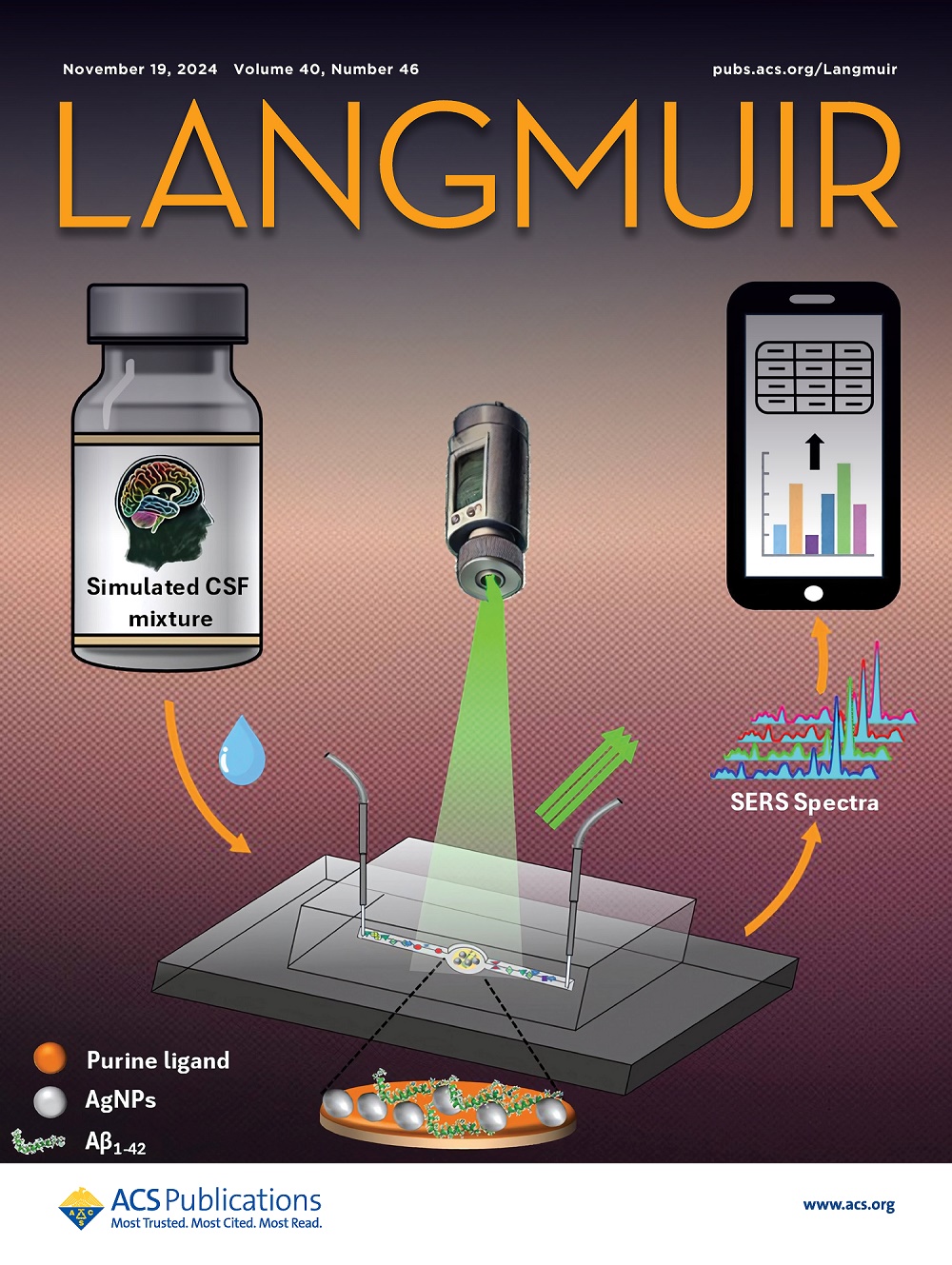Assembling Xanthan Gum at the Air–Water Interface and Disentangling It with Ionic Liquids
IF 3.7
2区 化学
Q2 CHEMISTRY, MULTIDISCIPLINARY
引用次数: 0
Abstract
Xanthan gum is a biopolymer used in a wide range of products in the food and cosmetic industries. As ionic liquids (ILs) have emerged as antimicrobial molecules, they can be used as preservatives for this polymer. Hence, it is important to understand the interaction of ionic liquids with Xanthan gum. In this investigation, polymer self-assembly at the air–water interface has been studied in the presence of ionic liquids floating at the air–water interface. From the surface pressure–area isotherm, it is shown that the electrostatic interaction drives the polymer to the interface, resulting in a viscoelastic film. In-plane dilation rheology has determined the storage and loss moduli of the film, which are found to depend on the concentration of the polymer dissolved in the water subphase. Additionally, a synchrotron-based X-ray reflectivity study has produced the electron density profile across the interface, depicting the structure of the film and suggesting that the negatively charged side groups of Xanthan gum attach to the positively charged headgroup of ionic liquids. This assembly drives the polymer to disentangle, which has been further verified in an aqueous solution of the polymer showing a non-newtonian shear-thinning behavior. The storage and loss moduli curves show two crossover frequencies, manifesting an elastic plateau width that decreases in the presence of IL in the solution. This, in turn, is a signature of the disentangling effect of the IL.

求助全文
约1分钟内获得全文
求助全文
来源期刊

Langmuir
化学-材料科学:综合
CiteScore
6.50
自引率
10.30%
发文量
1464
审稿时长
2.1 months
期刊介绍:
Langmuir is an interdisciplinary journal publishing articles in the following subject categories:
Colloids: surfactants and self-assembly, dispersions, emulsions, foams
Interfaces: adsorption, reactions, films, forces
Biological Interfaces: biocolloids, biomolecular and biomimetic materials
Materials: nano- and mesostructured materials, polymers, gels, liquid crystals
Electrochemistry: interfacial charge transfer, charge transport, electrocatalysis, electrokinetic phenomena, bioelectrochemistry
Devices and Applications: sensors, fluidics, patterning, catalysis, photonic crystals
However, when high-impact, original work is submitted that does not fit within the above categories, decisions to accept or decline such papers will be based on one criteria: What Would Irving Do?
Langmuir ranks #2 in citations out of 136 journals in the category of Physical Chemistry with 113,157 total citations. The journal received an Impact Factor of 4.384*.
This journal is also indexed in the categories of Materials Science (ranked #1) and Multidisciplinary Chemistry (ranked #5).
 求助内容:
求助内容: 应助结果提醒方式:
应助结果提醒方式:


